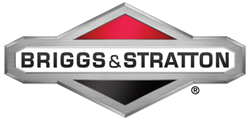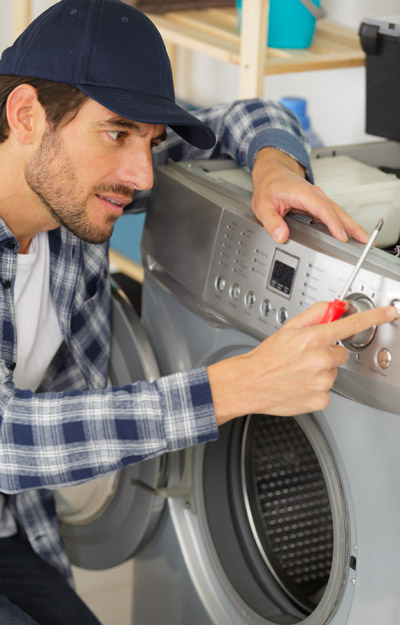Easy repair, but did take a little longer than anticipated due to the extra cleaning that I did while the dryer was disassembled (highly recommend). First, unplug the power cord. Then, open the door, and locate the two screws in the upper corners, and remove. This will allow you to remove the top cover. Be careful and work the top panel up and down to loosen the control panel tabs, and set aside top panel. Next, remove the two screws located near the top on the inside of the front panel. Removing these two screws will allow you to lean the front panel forward, lift up, releasing the tabs holding the bottom of the panel. Be careful when you pull the front panel from the dryer as you will need to lift the drum off of the front bearing which is attached to the front panel as it is removed. You will also need to use your needle nose pliers to remove the wires prior to setting the panel aside. The wires are straight forward and power the light at the top, and the safety door switch. I always take a picture with my phone's camera just to validate when I re-connect them. Reaching underneath the drum you will be able to feel the belt and belt tensioner pulley. With both hands under the drum, use one hand to push the pulley to the right, releasing tension on the belt. Move the belt out of the groove, and let it hang freely. Now from the top of the drum, bump the drum to loosen, and remove from the cabinet. It is a tight fit, so you will need to spread the sides slightly in order to remove the drum. Next, remove the 3 screws holding the heat diffuser in the rear of the drum in order to remove the rear drum bearing. (Tip: It would be nice to have a helper hold the new drum bearing in place when starting the screws, and it also helped to tighten each a little at a time to keep the new bearing flat as it was drawn up next to the drum.) Tighten the screws holding the new bearing in place. Next, remove the 4 small screws holding the heating element housing to the rear of the dryer. (Tip: Rather than disconnecting the wires, I used a bent coat hanger to hold the housing while I removed the bearing retainer and clip from the rear of the housing.) Remove the 4 screws holding the bearing retainer and clip, and replace with you new part, paying close attention to the clip's position, and tighten. Replace the housing to the rear of the dryer. (Tip: Now is a good time to familiarize yourself with the belt and tensioner pulley for reassembly. Also, it may be a good idea to look at your belt, and replace as needed.) Next, reinstall the drum and insert the new bearing shaft into the new bearing housing. Using both hands again, reach underneath the drum, locate the tensioner pulley, and belt. Push the tensioner pulley over to the right, and move belt over the pulley on the motor, and behind the tensioner pulley. The belt should be tight. If not, inspect to ensure that the belt is over the motor pulley, and the tensioner pulley. Next step is to reinstall the front panel. I also spent the extra money and replaced the front drum bearing, and slides. Please note that the green slides are on top, and the white slides are on the bottom. Lift the panel over the tabs, lean forward while lifting the tub, resting the tub on the front bearing. Reinstall two screws in the upper corners, and tighten the front panel back in place. Now is a good time to turn the drum to ensure that the belt is in place, and that the drum turns correctly. (Tip: If your dryer is equipped with a light, you may also want to replace the bulb in the front panel (if needed) prior to attaching the front panel.) Reinstall the top panel by aligning the tabs in the control panel with the top panel, being careful not to bend the tabs. Next, open the front door and use the 2 long screws to reattach the top panel to the front panel. Plug in power cord.
Parts Used:




































